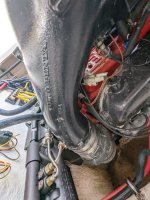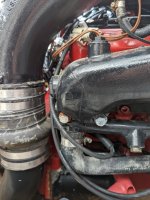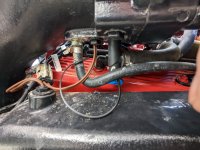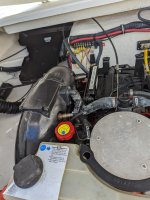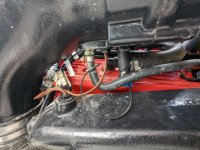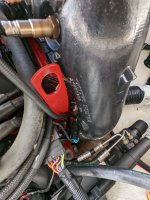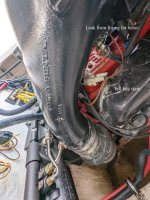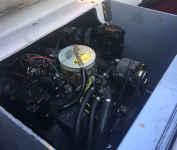Donald0039
Chief Petty Officer
- Joined
- Jun 11, 2022
- Messages
- 478
The boat is at a marina on a rack, so it's not like I can do testing every afternoon. The manifolds each look to have two identical looking sensors, one in the exhaust manifold towards the front of engine and one in exhaust elbow (riser) towards the rear.Not sure what to think. Things were changing soo fast during these years, support material couldn’t keep up. This is why techs are trained in how the systems work, so when we get conflicting info we can find were the answer is.
The diagnostic manual for the 2 serial numbers you have posted shows this engine as using 2 EGT sensors to monitor riser/elbow temp. They don’t even list the 441,442 codes.
The wiring diagram is the same for both S/Ns. It shows 4 temp sensors. None of them EGT sensors.
The parts breakdown is kind of iffy for this engine. It shows 2 temp sensors. It also shows that if you wanted a TPS you would have to buy the complete throttle body, sure hope that’s a typo/glitch. Also shows that if you want replacement heat exchanger cap gaskets ---- you have to buy a heat exchanger? That’s crazy because when you service the heat exchanger on this engine, you remove the end caps and clean it out. You only back flush / chemical flush sealed heat exchangers.
I’m not sure what your engine has. I can’t see your engine. The only question you’ve answered is what the FMI numbers are. At this point I’m not even sure if your manifolds are raw water cooled. Have you loosened any hoses to see what comes out? The only way anyone can help you is if you answer questions 100% correct. If you’re not sure, just ask and we can help you.
did you post a pic of the O2 feedback monitor? ERWT sensor temperature and voltage information is only available in Diacom’s O2 Feedback Monitor.
A lot depends on what you have. Do you have a Temperature Control Device (TCD) or a Pressure Control Device (PCD) and what one do you have?
Maybe post a pic of what you have? I would hate to give you advice on how to service a TCD if you have a PCD
Your engine may have 1 or 2 temp sensors on each manifold, they will look the same. Do you know how many you have? They will have 1 or 2 wires.
If you look at Diacom do you see temps for EMWT and ERWT?
Like I said a couple of times before.
The temperature control devices are the most common cause of this problem. They are also the easiest and cheapest to check.
Could the problem be somewhere else? Sure could, might even be electrical (you said earlier something about shooting the manifold temps—did you?) maybe do a clear hose test, maybe a total water output test, maybe inspect the heat exchanger and replace the rubber cap gaskets --- they tend to start to go bad at this age and expand so they block the water flow.
I was thinking of pulling the endcaps off the heat exchanger but the gaskets are not listed in the parts diagram. How would I get new gaskets? Can one pull the guts of the heat exchanger out to soak or it's it basically one piece all soldered together except for the endcaps?
Could I be low on coolant in the overflow and that is the problem? I see what looks to be 1/2" of coolant in the bottom of the overflow. Trying to get some Volvo Penta VCS but no place seems to stock it and these are VP authorized dealers.
I see nothing in the Diacom about a ERWT. Only EMWT.
I plan on going to the boat Thur or Fri afternoon to work on it. Run it on muffs and get some temp readings with IR temp gun. Maybe run it with the water going into the flushing port bypassing the oil cooler.
Not sure about pulling the heat exchanger endcaps without replacement gaskets in hand.
Other suggestions of things to check or test?




















